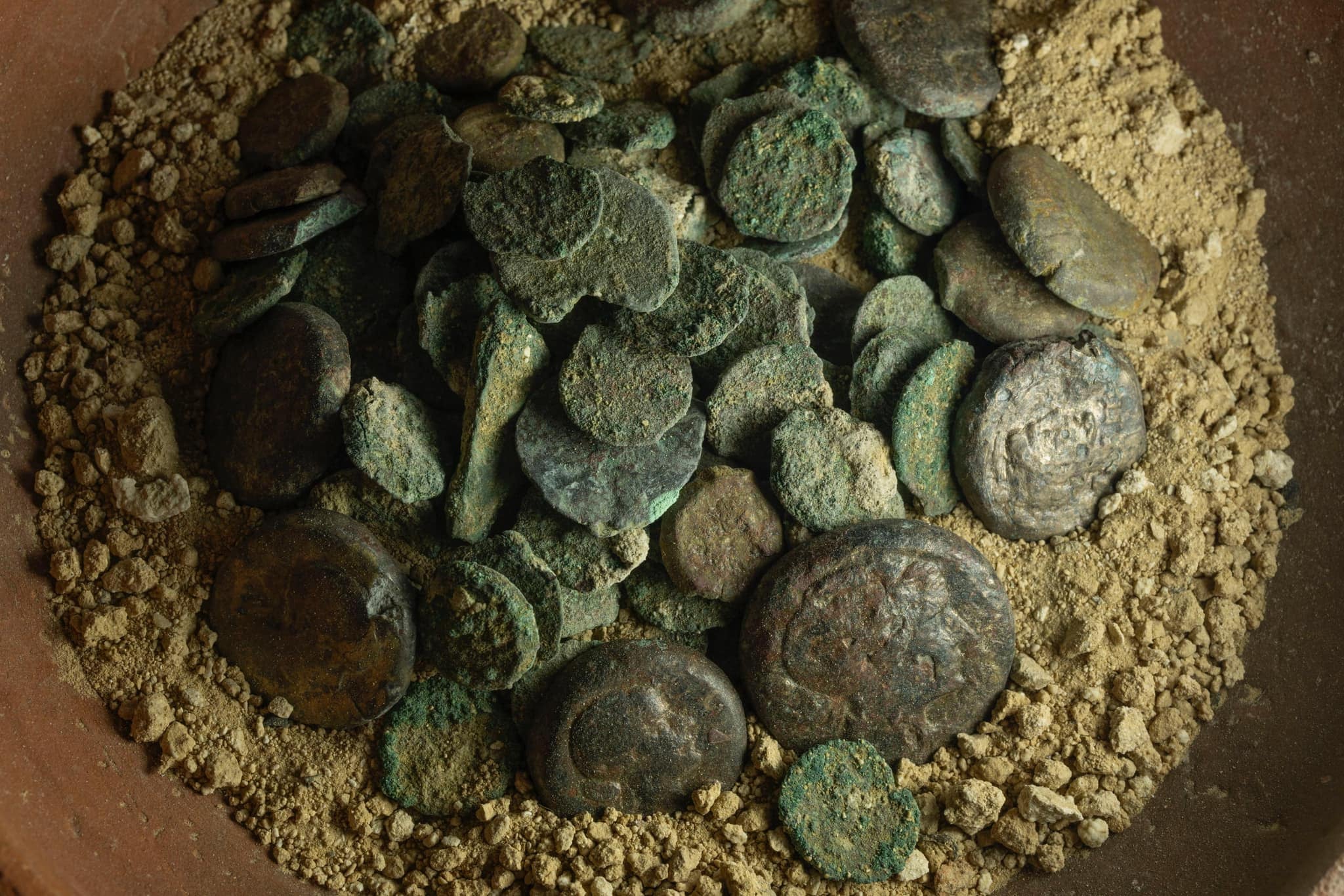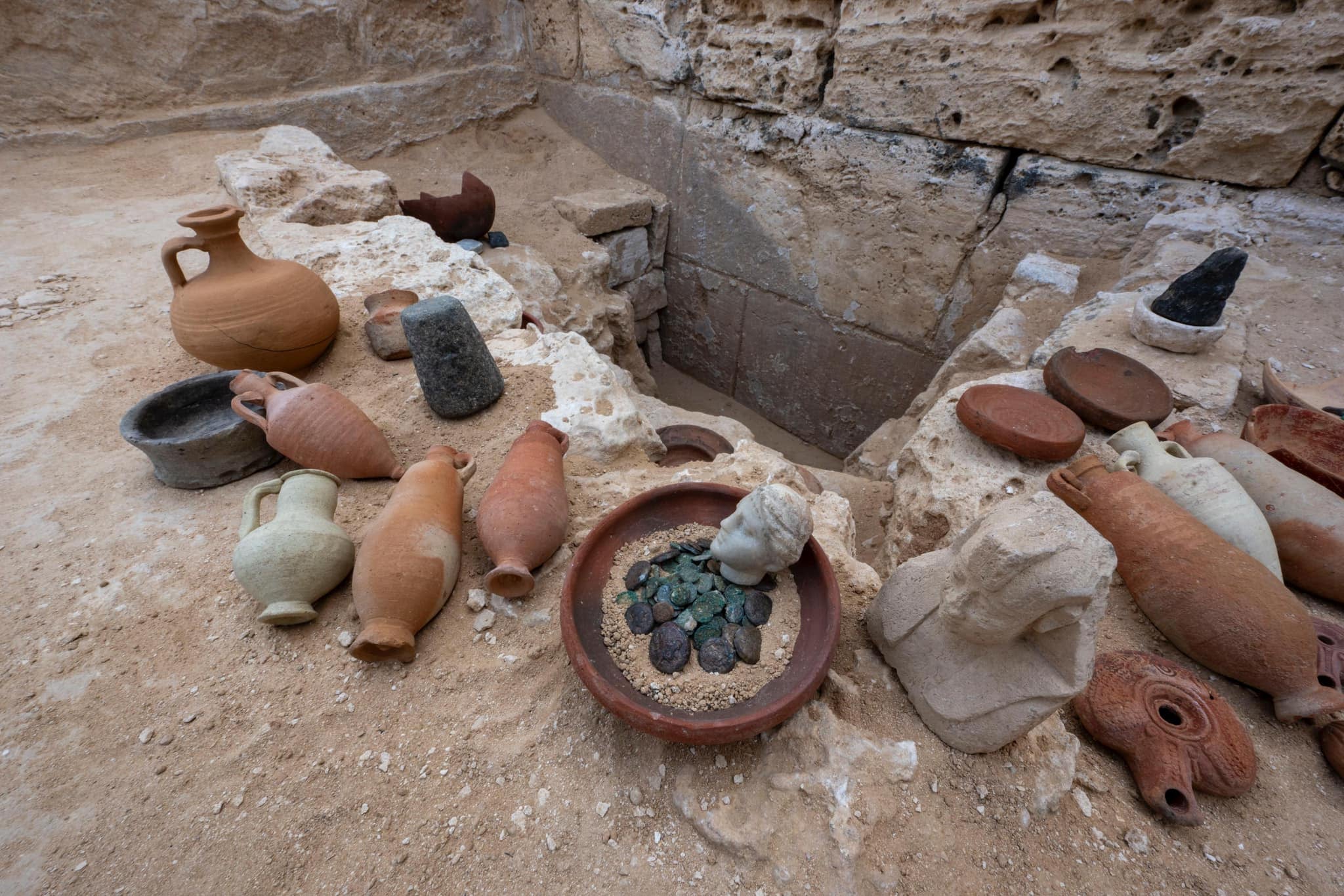Archaeological discoveries often reveal intriguing glimpses into the past, and recent excavations at the Taposiris Magna temple near Alexandria have unearthed treasures that deepen our understanding of the Ptolemaic period.
These findings include artifacts that hint at the grandeur and complexity of ancient Egyptian society, while fueling debate among scholars about their significance.
Under the leadership of Kathleen Martinez, a lawyer-turned-archaeologist, and in collaboration with the Universidad Nacional Pedro Henríquez Ureña, researchers uncovered a variety of items beneath the temple’s southern wall. These foundation deposits, ceremonial offerings buried at the start of construction, revealed a rich cache of artifacts dating to the late Ptolemaic era.
Among the most captivating finds was a small white marble statuette of a woman wearing a royal crown. Martinez believes this piece depicts Cleopatra VII, Egypt’s last Ptolemaic ruler, known for her political acumen and relationships with Julius Caesar and Mark Antony.

Not all experts agree with Martinez’s conclusion.
The Egyptian Ministry of Tourism and Antiquities stated that the facial features of the bust differ from those typically associated with Cleopatra VII. Zahi Hawass, a former Egyptian minister of antiquities, examined the statue and determined it likely represents a Roman woman or a princess, not Cleopatra. “The bust’s style is Roman,” he noted, “and does not align with Cleopatra’s era.”
The marble bust is one of several significant discoveries at the site. Researchers also found a limestone bust of a king wearing the Nemes headdress, commonly associated with pharaohs.
The excavation yielded 337 coins, many depicting Cleopatra VII, alongside ceremonial pottery, oil lamps, bronze statues, and an inscribed scarab amulet proclaiming, “The justice of Ra has arisen.” These items, along with shards of ceramic, confirm that the temple’s construction dates to the 1st century BCE, during Cleopatra’s reign.
Related Stories
Other remarkable finds include remains of a Greek temple dating to the 4th century BCE. This structure was likely destroyed between the 2nd century BCE and the early Roman period.
Researchers discovered 20 catacombs and an underground tomb containing nine white marble busts near the ancient lighthouse of Taposiris Magna. Preliminary underwater excavations at the submerged sections of the city uncovered man-made structures, human remains, and a wealth of pottery.
The Taposiris Magna site, founded around 280 BCE near the Mediterranean Sea, hosted temples dedicated to deities like Osiris and Isis. The intricate system of tunnels extending from Lake Mariout to the Mediterranean underscores the city’s historical importance.
Martinez’s team hopes the site might eventually reveal Cleopatra VII’s final resting place, a mystery that has captivated archaeologists for decades.

Cleopatra VII’s legacy remains as fascinating as it is enigmatic. Born in 69 BCE, she ruled Egypt during a turbulent period, forging alliances and navigating political conflicts with the Roman Empire.
Her death in 30 BCE marked the end of Egypt’s Ptolemaic dynasty and the beginning of Roman rule. Martinez, who has spent nearly 20 years searching for Cleopatra’s tomb, believes that traditional depictions of the queen may not fully capture her appearance or cultural identity.
Despite the debates surrounding the marble bust, the artifacts discovered at Taposiris Magna provide invaluable insights into the architectural, cultural, and ceremonial practices of the late Ptolemaic period.
The Egyptian Ministry of Tourism and Antiquities emphasized the significance of these finds in enhancing our understanding of ancient Egyptian history. As the mission continues, researchers remain hopeful that further excavations will shed light on the mysteries of Cleopatra’s life and reign.

Cleopatra VII Philopator (69 BCE–30 BCE), the last active ruler of the Ptolemaic Kingdom of Egypt, remains one of history’s most iconic figures. Here’s a brief summary of her life, achievements, and legacy:

Cleopatra has inspired countless works of art, literature, and film, cementing her status as a figure of fascination and intrigue. While myths about her persist, modern scholarship continues to shed light on her true significance in history.
The discoveries at Taposiris Magna stand as a testament to the enduring allure of Egypt’s ancient past, blending history and legend in a captivating narrative that spans millennia.
Note: Materials provided above by The Brighter Side of News. Content may be edited for style and length.
Like these kind of feel good stories? Get The Brighter Side of News’ newsletter.
The post Bust of Cleopatra VII may have been found at ancient Egyptian temple appeared first on The Brighter Side of News.